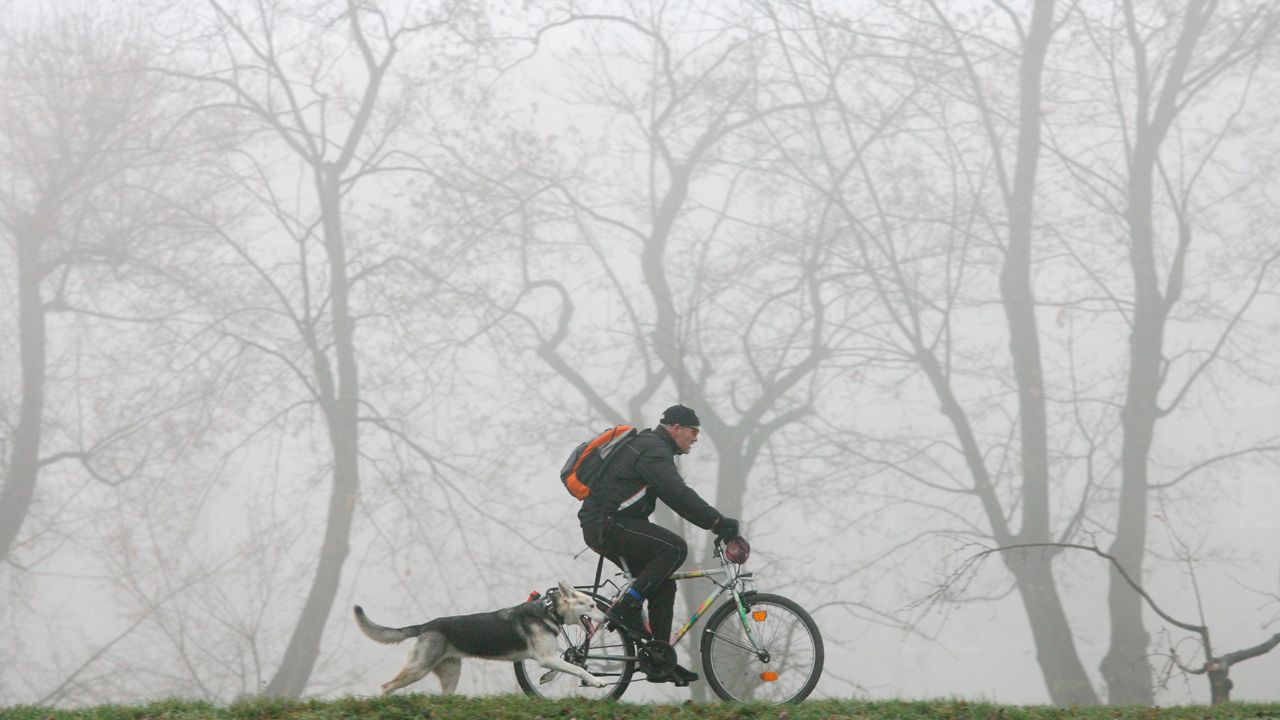Winter can bring more than its fair share of foggy mornings. Both fog and freezing fog can happen this time of year, which may have you wondering what the difference is between the two and the common hazards associated with each.
Let's start with the most basic definition of fog. Fog is a cloud that forms at or near ground level. It typically forms on clear nights with light wind when heat absorbed by the earth during the day is radiated back into the atmosphere.
The air immediately above the surface cools, allowing for the water vapor contained within it to condense, forming tiny water droplets. Eventually, enough of these water droplets gather together, forming a cloud at ground level.
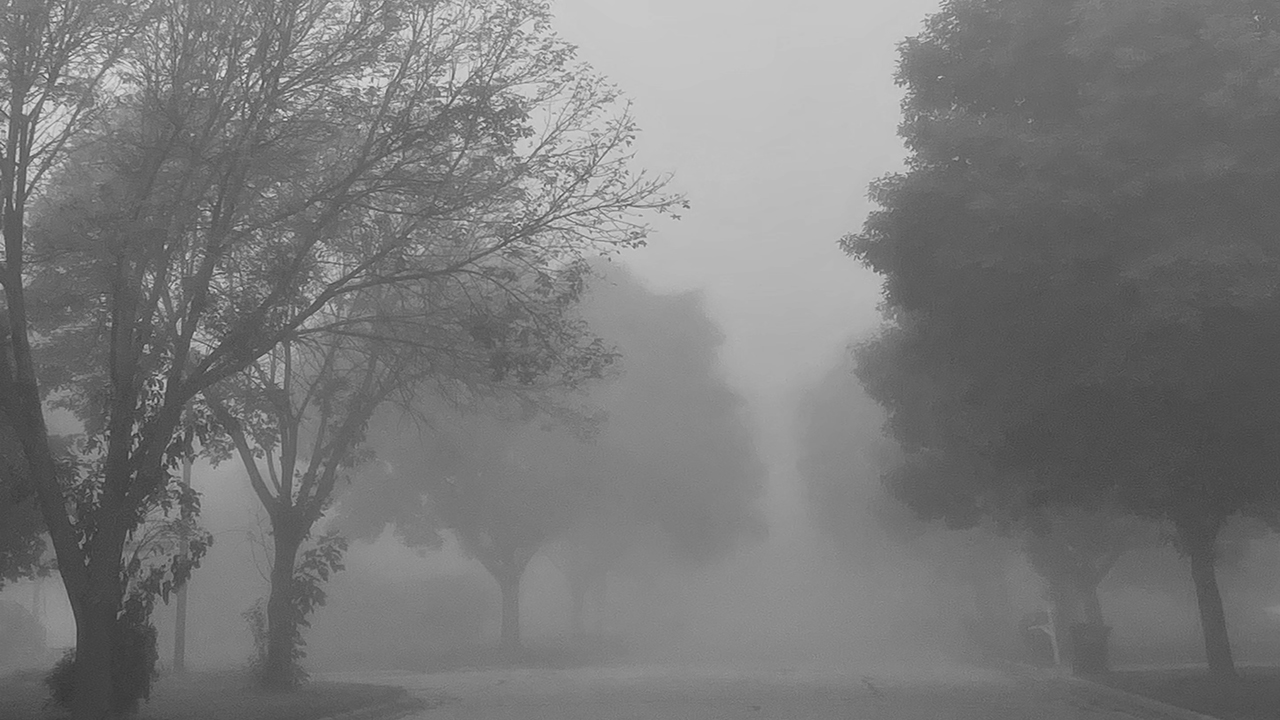
Fog can create many hazards, especially when it comes to travel. Fog can significantly reduce visibility, in some cases down to a quarter-mile or less. The low visibility can result in travel delays and accidents.
Pilots are unable to take off and land in times of dense fog and taxiing to or from an airport runway can be very dangerous. Flight disruptions and aviation delays can be very common on foggy days.
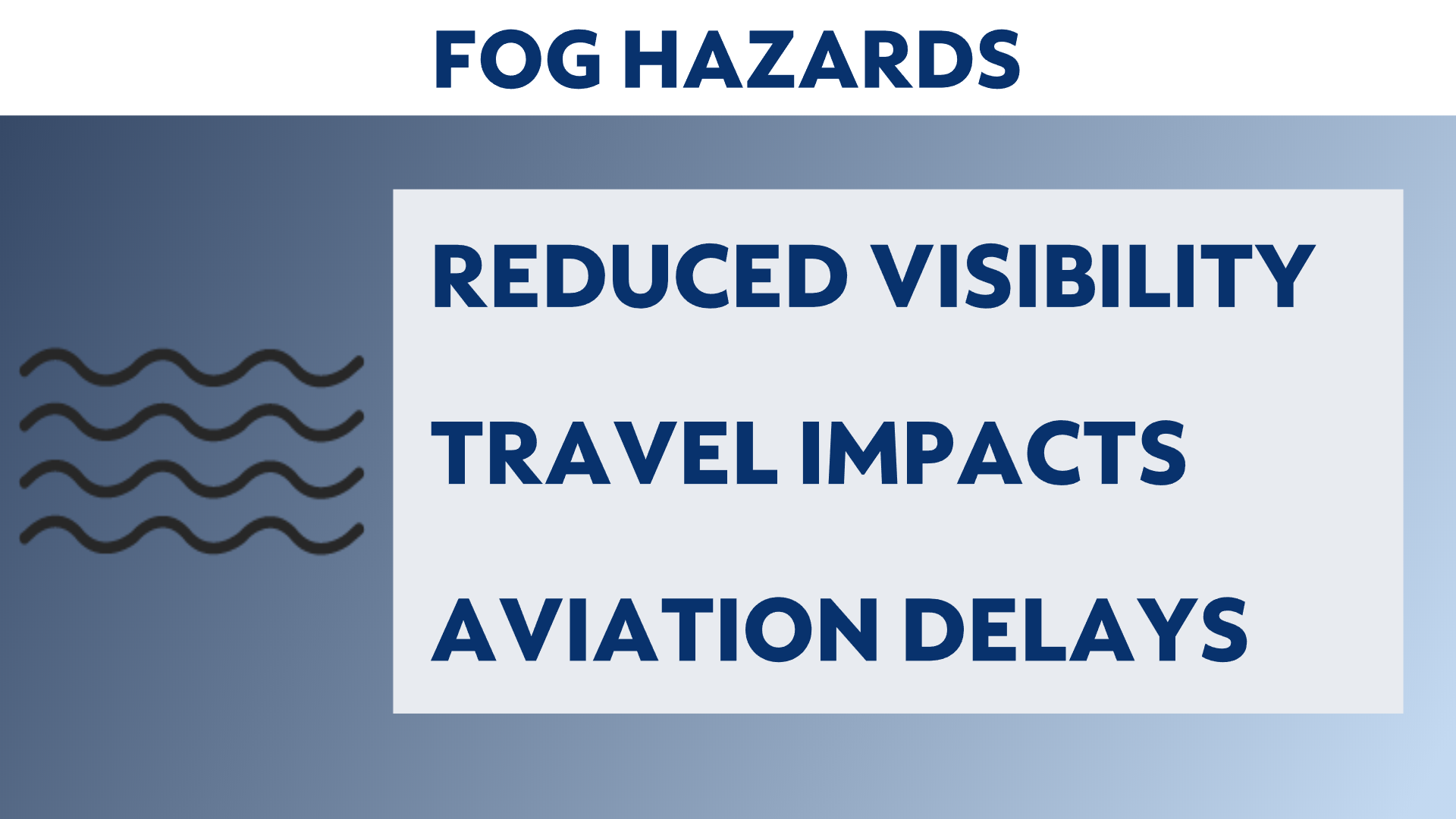
Fog is usually referred to as freezing fog when it occurs at temperatures from 14 to 32 degrees.
Water droplets can remain in liquid form at temperatures as low as 14 degrees. When these water droplets come in contact with any surface below freezing, they immediately freeze on that surface. This includes tree branches, sidewalks, roads and vehicles.
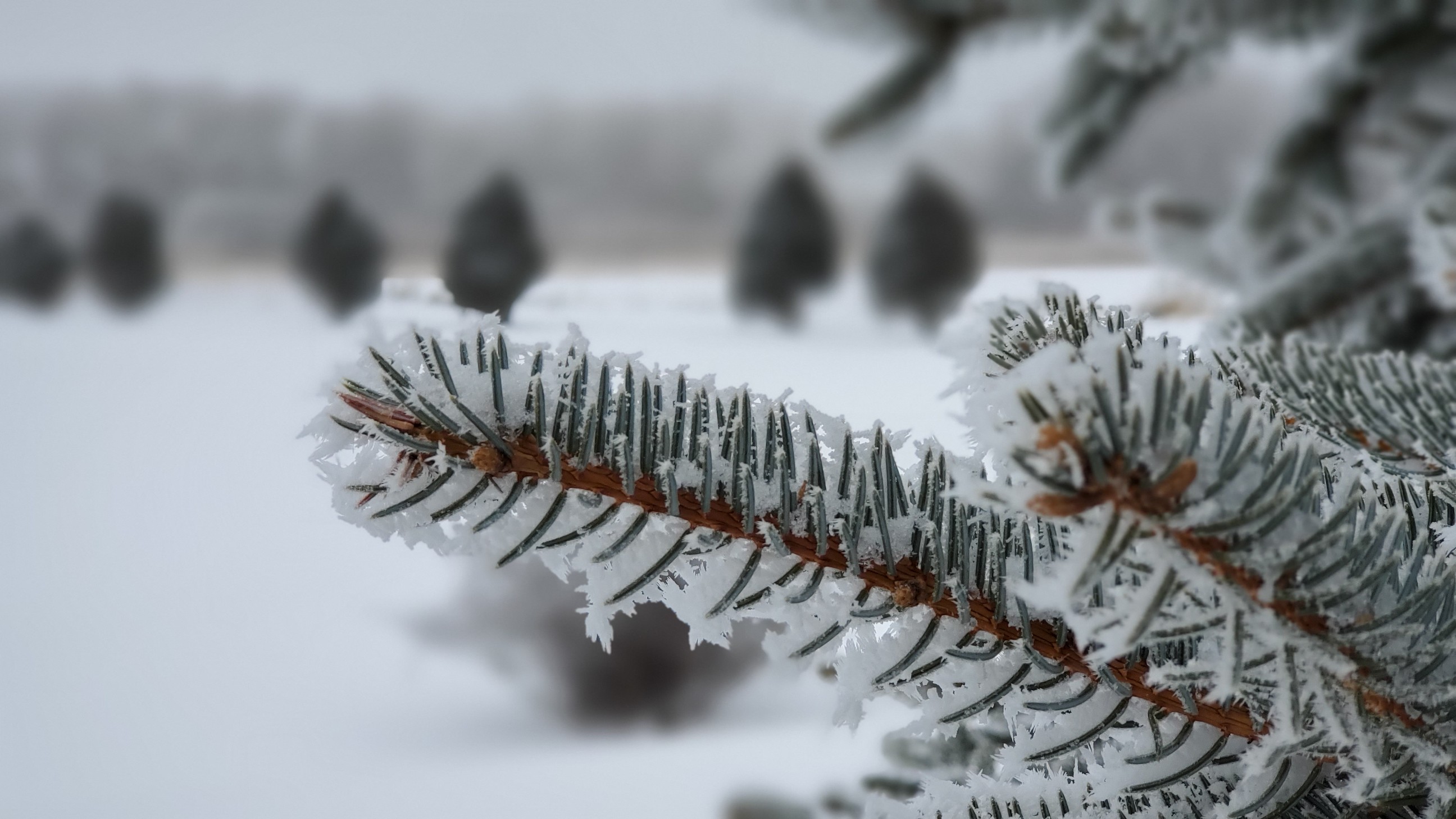
In addition to the hazards associated with fog, freezing fog comes with its own set of dangers. Because the water droplets contained within this type of fog freeze on contact, they can form a layer of ice on any surface they touch.
Black ice can form on roads during freezing fog events. Bridges, overpasses and sidewalks can become especially slick. A thin layer of ice can also form on planes and other aircraft, making it very dangerous to fly unless the aircraft is treated with de-icer.
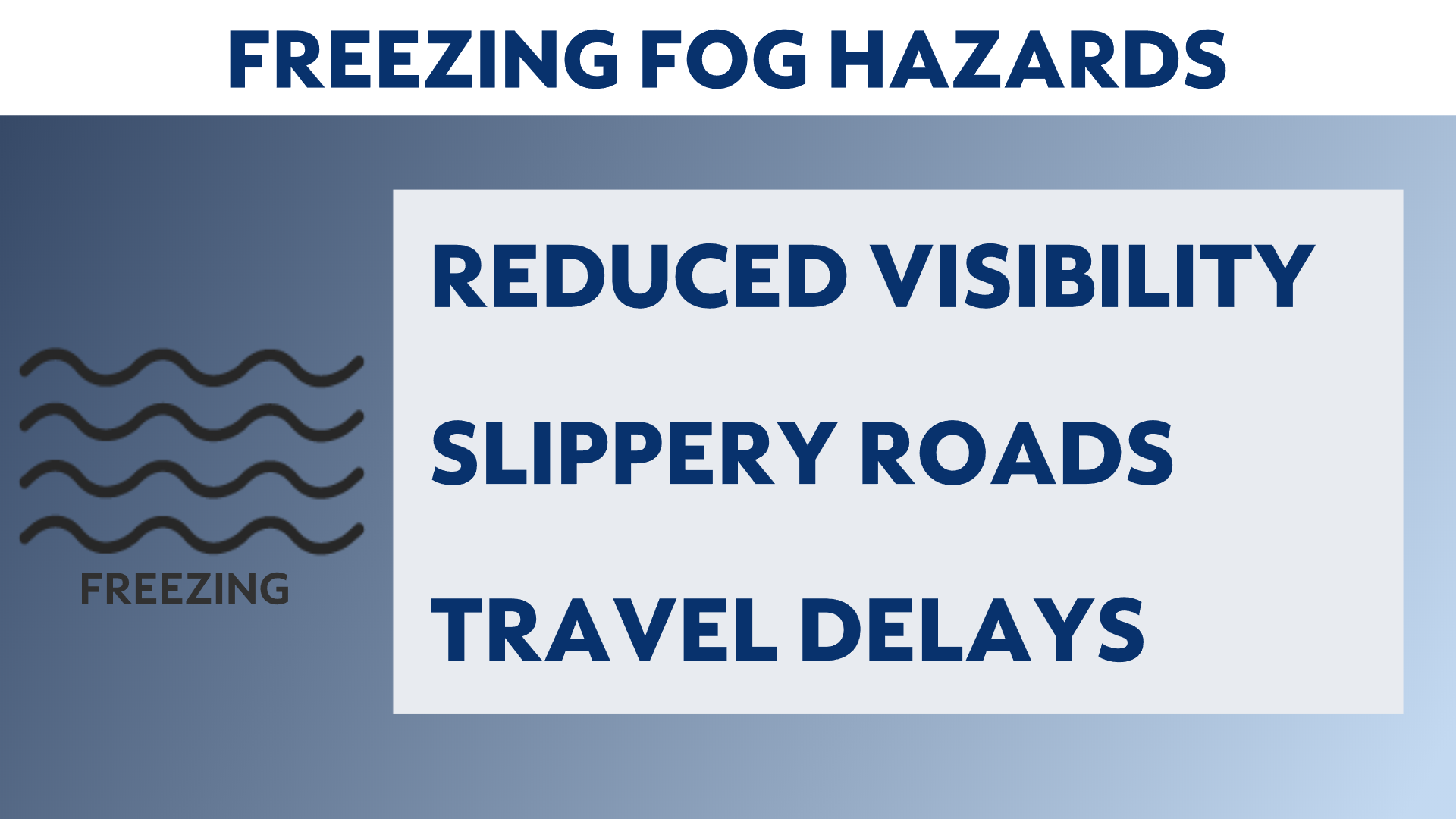
If you need to drive when it's foggy, slow down and leave yourself extra time to get to your destination.
Use your low-beams, not not your high beams, when driving. High beams can cause more glare, making it more difficult to see.
Leave plenty of space between you and the cars around you in case of sudden stops or traffic pattern changes.
When the temperature is below freezing, keep in mind that freezing fog may be present, so treat any area on the road that looks wet as if it were ice.
Our team of meteorologists dives deep into the science of weather and breaks down timely weather data and information. To view more weather and climate stories, check out our weather blogs section.



